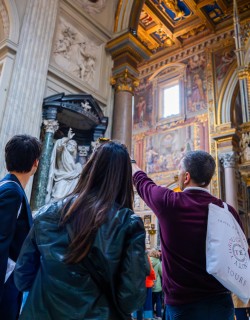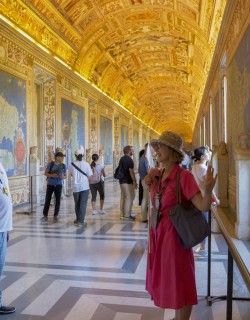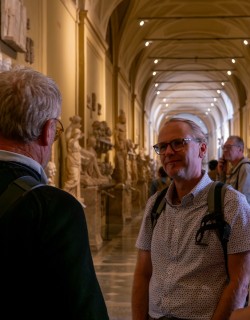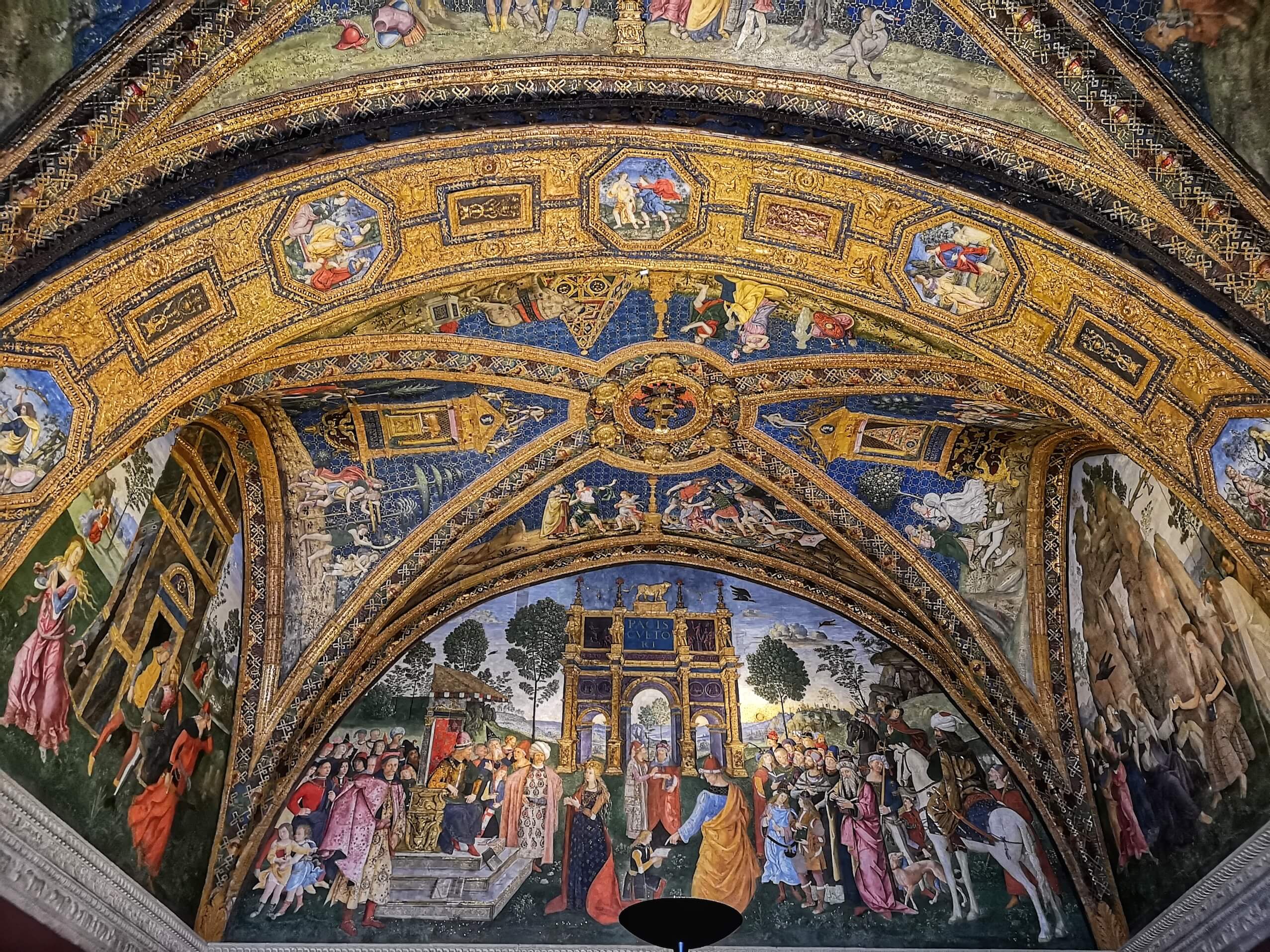
This week we’re taking a closer look at one of our favourite corners of the Vatican Museums: the Borgia Apartments. Far too often overlooked by visitors as they make their way towards the Sistine Chapel, the stunning suite of Papal apartments feels a bit forgotten, and part of them doubles as exhibition spaces for the Vatican’s modern art collection, meaning many don’t even take a second glance at the historic decorations of the ceilings. Don’t make their mistake: the truly magnificent frescoes painted by the Umbrian master Pinturicchio here for Pope Alexander VI in the closing years of the 15th century vividly demonstrate the courtly charm of the Renaissance in rooms rich with the dark history of the Borgias.
When you think of the Papal apartments in the Vatican Museums, it’s a good bet that your thoughts turn first to the Raphael Rooms, the extraordinary suite of rooms that the young Raphael and his workshop decorated for Pope Julius II in the opening years of the 16th century.
Raphael certainly had the last word in decorating private Vatican apartments for the popes, but he had a pretty impressive paradigm to look up (or down) to when he was labouring away in the Stanza della Segnatura for Julius. These came in the form of the beautiful Renaissance frescoes that the renowned Umbrian master Pinturicchio painted all along the walls and ceilings of the suite of rooms in which Julius’ hated predecessor, the notorious Spanish Borgia Pope Alexander VI, resided during his reign between 1492 and 1503.
Julius loathed Borgia so much that he was unwilling to even breathe the same air as his predecessor, wasting no time in abandoning the apartments and installing himself on the floor above in what would come to be known as the Raphael Rooms. Only sporadically occupied by various cardinal nephews in the succeeding centuries, the increasingly unloved Borgia suite was more or less abandoned until it was opened to the public in the late 19th century. Today the Borgia apartments come just after the Raphael Rooms on the Vatican Museums itinerary, giving you a wonderful opportunity to compare these two high points of Roman Renaissance art.
Pinturicchio in the Borgia Apartments
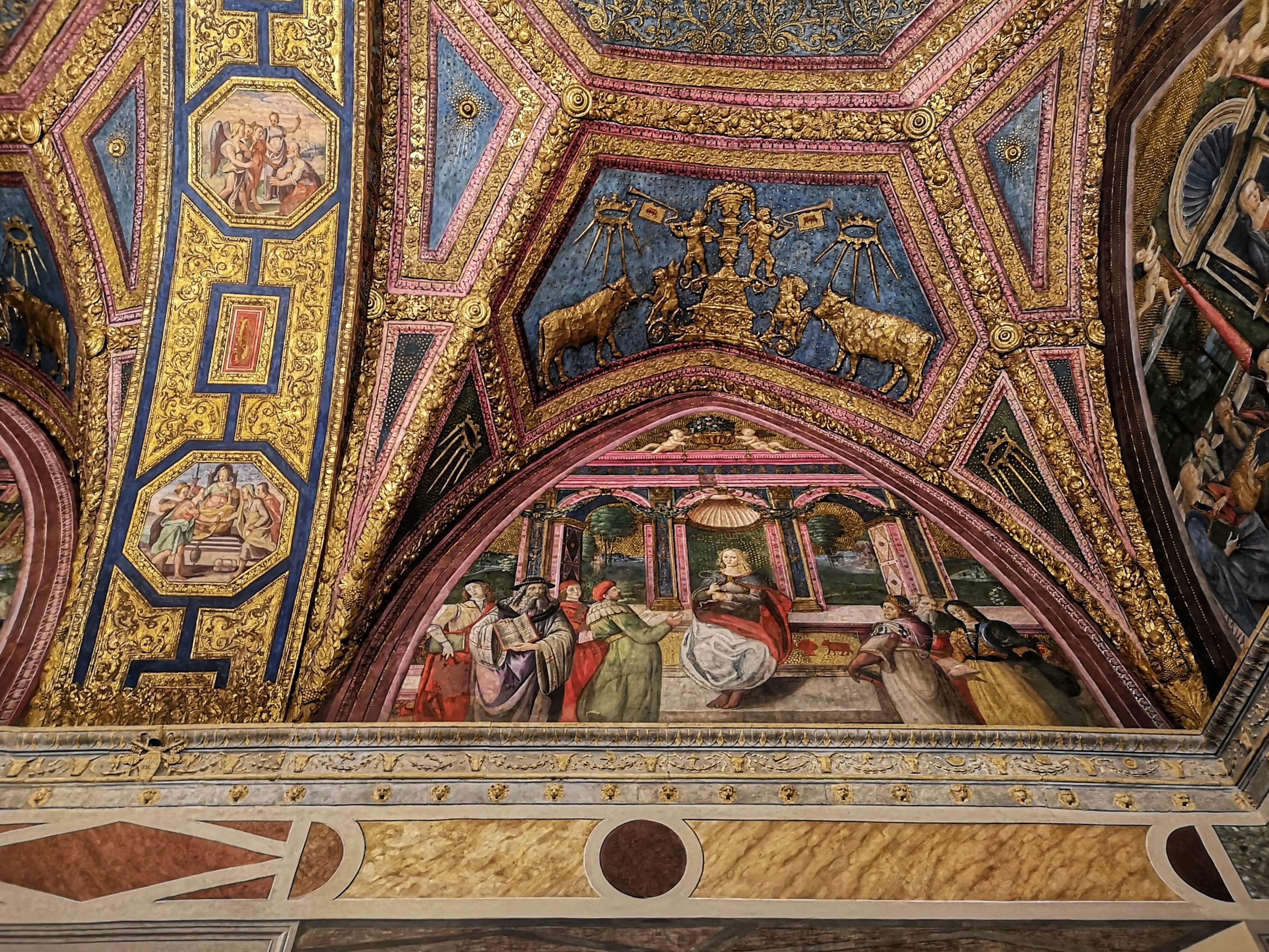
The Borgia apartments consist of 6 rooms divided across three distinct architectural phases of the Vatican palaces: the Room of the Sibyls and the Room of the Creed are located in the Borgia Tower; the Room of the Liberal Arts, the Room of the Saints and the Room of the Mysteries (the highlights of the ensemble) are in the wing of the Vatican palaces that had been built by pope Nicholas V in the 1450s for the private use of the pontiff, and known as the ‘secret rooms’ according to contemporaries of Borgia as they were the exclusive preserve of the Pope himself. The Room of the Pontiffs meanwhile is in the palace’s oldest wing, dating from the 1270s.

The artist that the new Borgia pope chose to decorate these private rooms already had ample Vatican pedigree - Bernardino di Betto, known to history as Pinturicchio, had impressed as a young painter during the first campaign of decorations in the Sistine Chapel in the 1480s, when he worked alongside Ghirlandaio, Botticelli, Perugino and others. But where his colleagues returned to their native regions after the cycle was completed, Pinturicchio decided to remain in Rome and open a workshop. At this time the Eternal City lacked a strong native school of Renaissance painting to match those in nearby Umbria and Tuscany, and it’s to Pinturicchio’s decision to remain that we owe many of Rome’s finest examples of quattrocento art.
The six rooms of the apartments dazzle with colourful splendour, a sparkling mix of painted wood, fresco, stucco and gold. Look out for the bulls that seem to crop up on every wall and ceiling – the Borgia heraldic emblem. Pagan and Christian themes mix freely, with inspirations deriving from ancient Roman, Egyptian and Jewish art and culture. You can even find the first ever European depictions of native Americans hidden here - Columbus had reached the New World just before Pinturicchio began working on the apartments.
The Room of the Saints
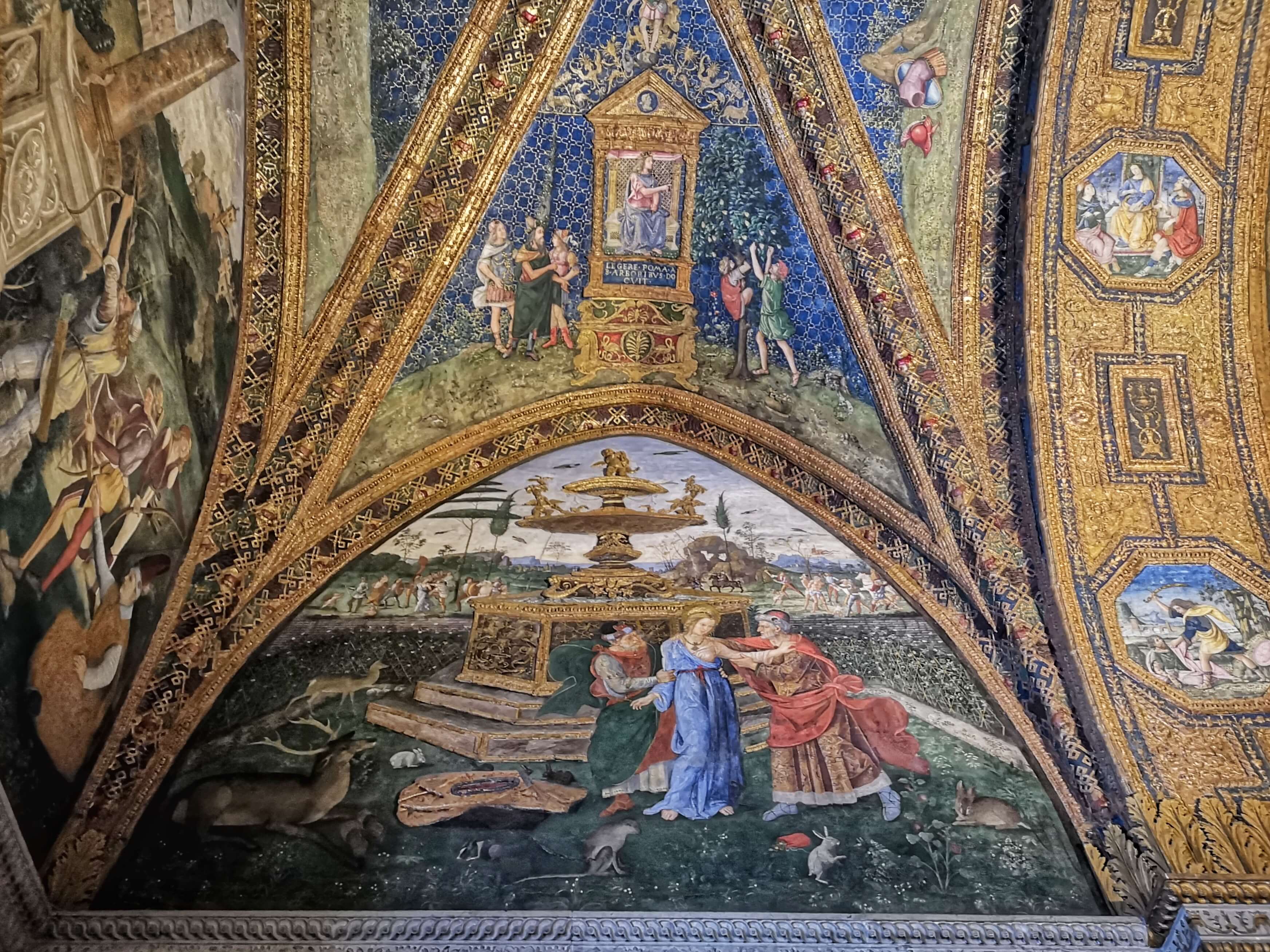
The absolute masterpieces of the suite come in the so-called Room of the Saints, where seven large lunettes house paintings depicting scenes from the lives of various holy figures. John the Baptist’s mother St. Elizabeth appears in the Visitation; the hermits Anthony Abbot and St Paul of Thebes occupy a blasted desert wilderness; St. Barbara flees from her tower-prison and vengeful father (below), brandishing a deadly sword and bent on her destruction for converting to Christianity; In Susannah and the Elders (above) the young saint defends herself against the lecherous advances of two old men in a beautifully pastoral garden chock-full of flowers and animals, whilst St. Sebastian is being shot through with arrows on the immediately recognisable Colosseum and Palatine Hill nearby.
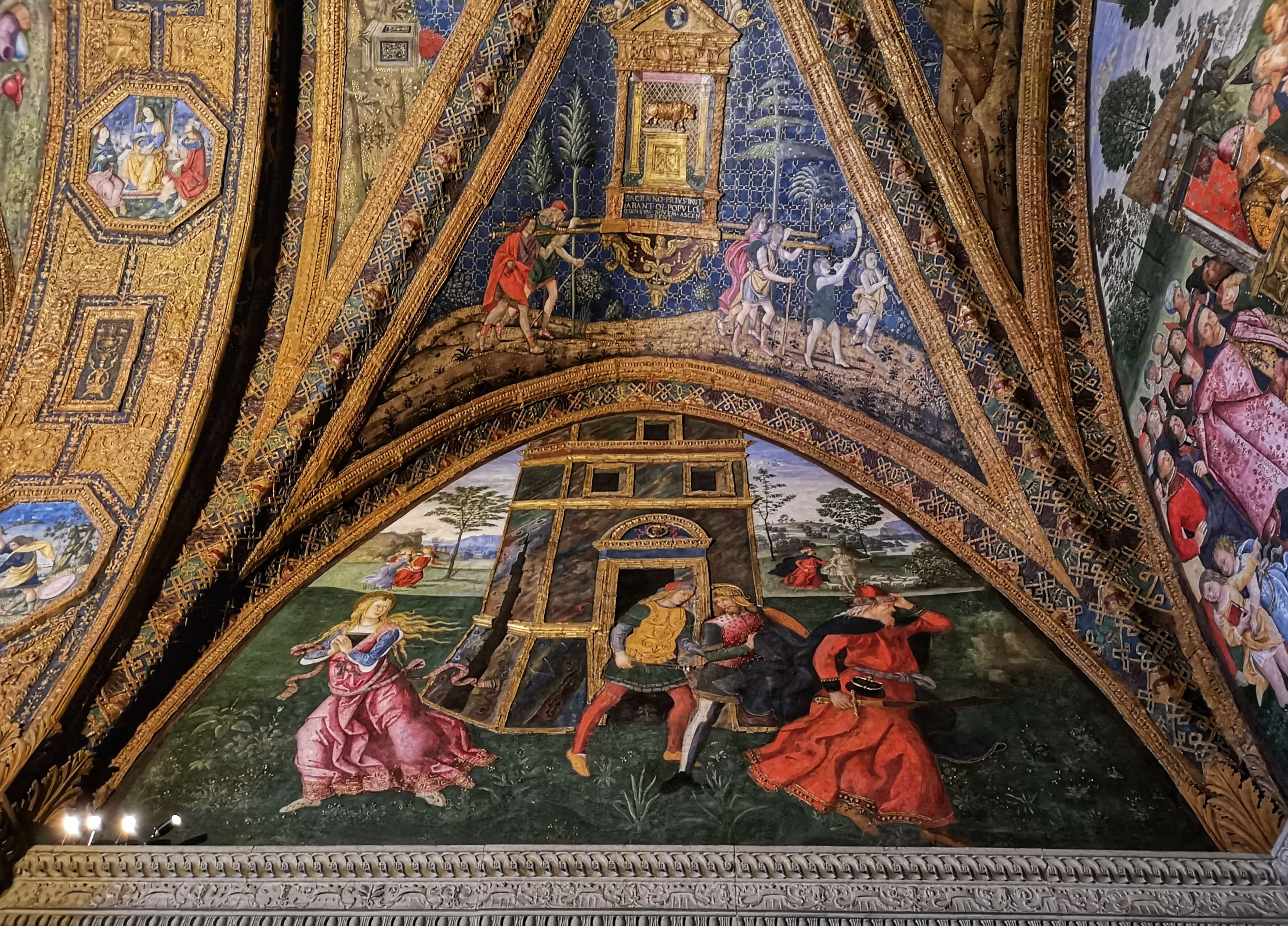
Best of all is the fresco facing Sebastian’s martyrdom depicting the Disputation of St. Catherine of Alexandria, where the young saint argues for the merits of Christianity with a pagan governor and his philosophers in one of Pinturicchio’s most famous compositions. In this vivid painting we see all the trappings of a Renaissance court, with the anachronistic gilded arch of Constantine topped with the Borgia bull rearing in the background.
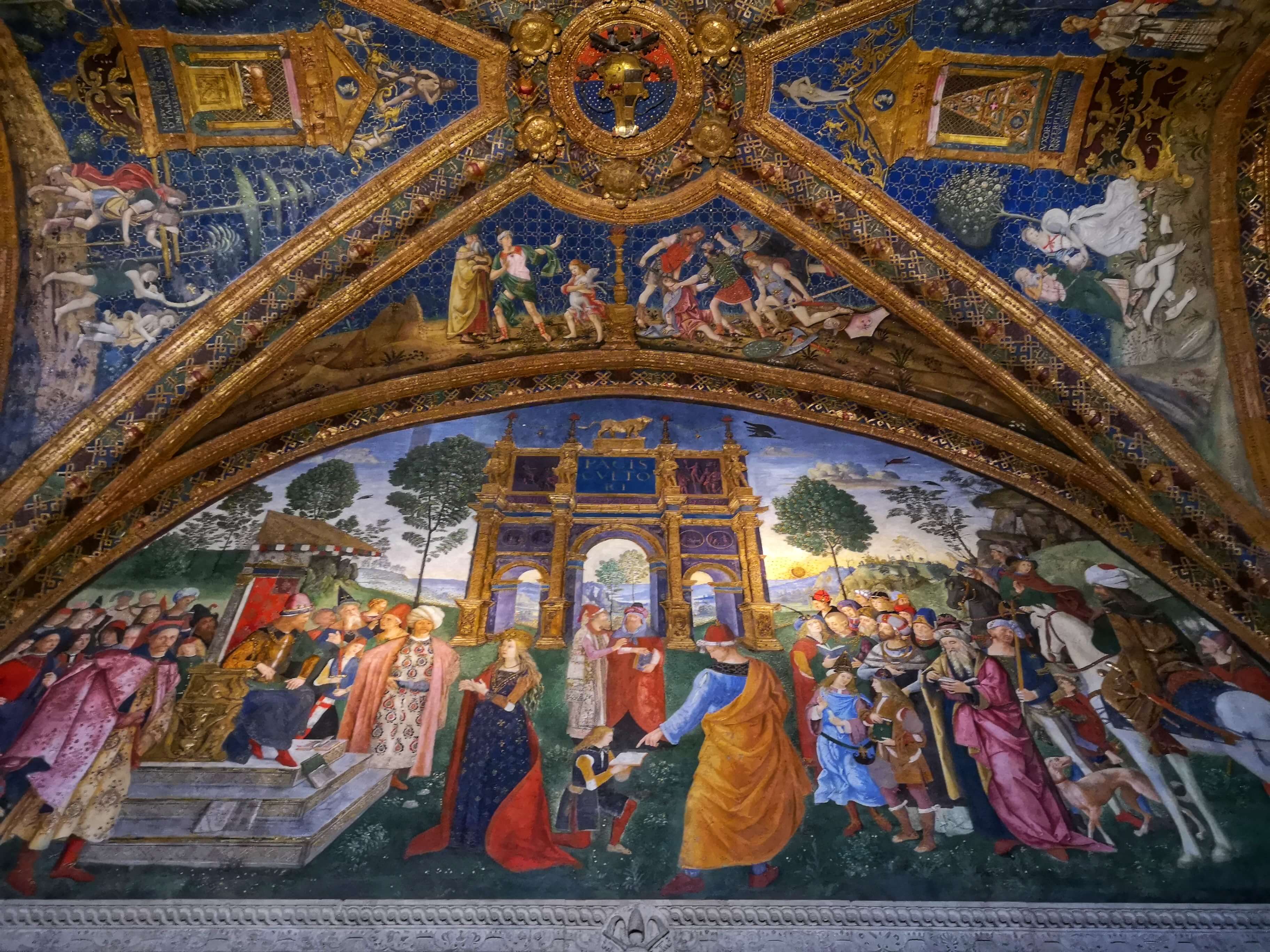
The pope’s daughter and notorious hedonist Lucrezia Borgia was probably the model for saint Catherine, whilst Pinturicchio and his architect friend Giuliano da Sangallo can be identified in the compass-wielding men behind the throne; above the door the infant Christ appears with the Madonna, in whose features we can perhaps read those of Giulia Farnese, the pope’s beautiful mistress.
A large number of images depicting scenes from the lives of Egyptian gods Isis and Osiris adorn the ceiling – this was the first comprehensive representation of Egyptian mythology since antiquity, and was part of an outlandish attempt to link the Borgias to Egyptian divinity in a remarkable example of Renaissance syncretism. Look out too for the beautiful original blue and white floor-tiles here, imported from the Pope’s home-town of Valencia.
The Room of the Mysteries of the Faith

The Room of Mysteries takes its name from the great miracles in the lives of the Virgin Mary and Christ depicted here. The Annunciation (above), Nativity, Adoration of the Magi,, The Ascension, Descent of the Holy Spirit, and Assumption of the Virgin are each masterpieces in their own right, but our favourite scene here is the marvellous Resurrection (below), where Pope Alexander himself watches the miracle, kneeling beneath Christ attired in lavish papal vestments. If you were hooked by the intrigue and plotting in the Showtime TV series The Borgias, this is your chance to find out whether Rodrigo really looked like Jeremy Irons.
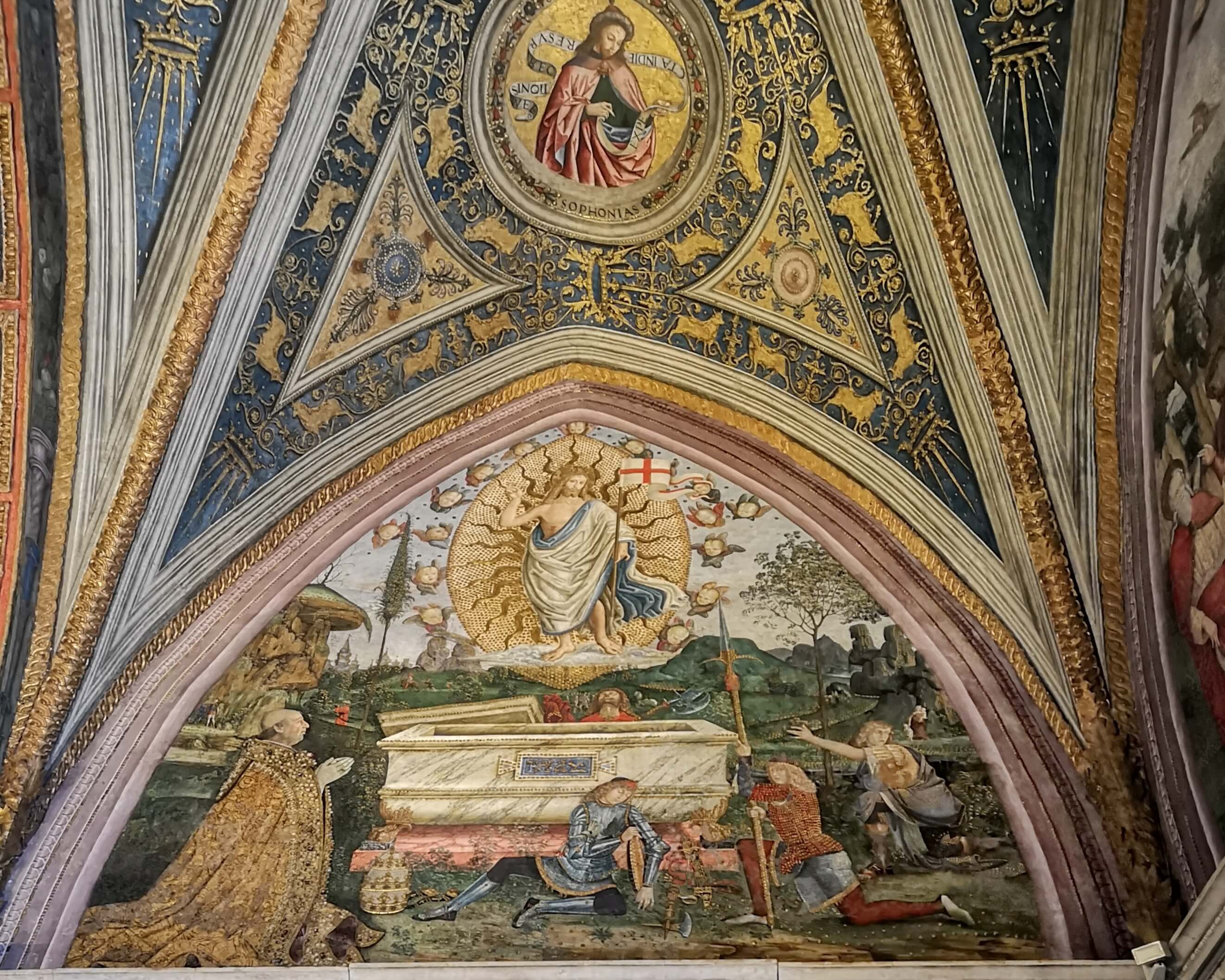
Keep an eye out too for the distinctive ‘grotesque’ pattern of decoration on the lower walls, inspired by the ancient Roman decorations found during this period in Nero’s rediscovered Golden House – Pinturicchio himself famously undertook dangerous night-time expeditions into the ruined subterranean villa, and the fruits of his explorations here in the Vatican are remarkable.
The Room of the Liberal Arts
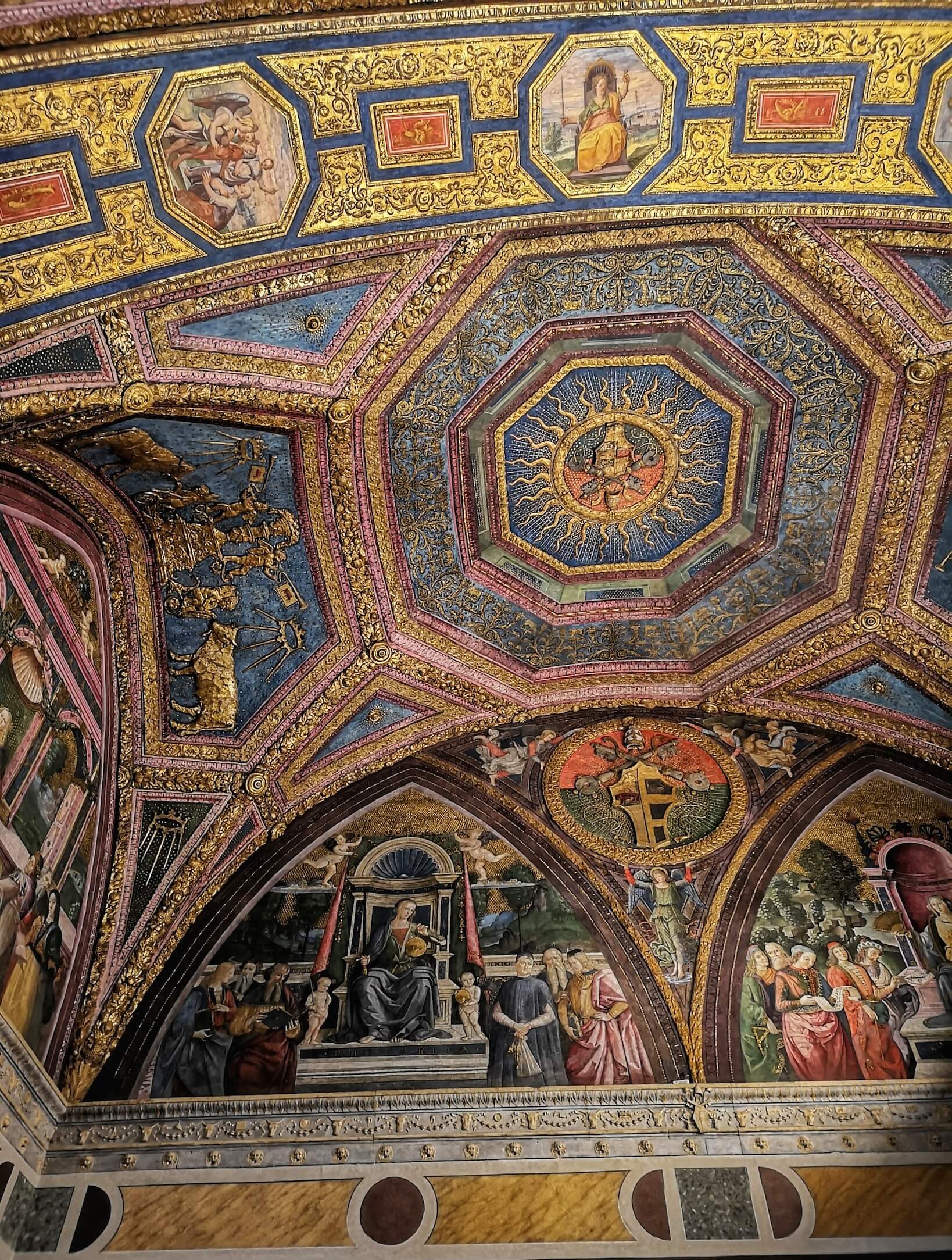
This room was probably the Pope’s study, and allegories in the form of enthroned women exalting the main branches of Renaissance learning stud the walls – the Trivium of grammar, dialectic and rhetoric, and the Quadrivium of geometry, arithmetic, music and astronomy respectively. Surrounding each are portraits of famous figures from history who advanced the various arts; Cicero personifies rhetoric, for example, whilst Euclid represents geometry.
Many are portrayed in the guises of illustrious contemporaries (Bramante amongst them), a precursor to the who’s who of the Renaissance art world that Raphael concealed in the School of Athens a decade later. Look closely and you can see Pinturicchio’s signature inscribed on the base of Rhetoric’s throne (although ironically scholarly consensus is that the master actually left the execution of this room to his assistants).
The Room of the Sibyls
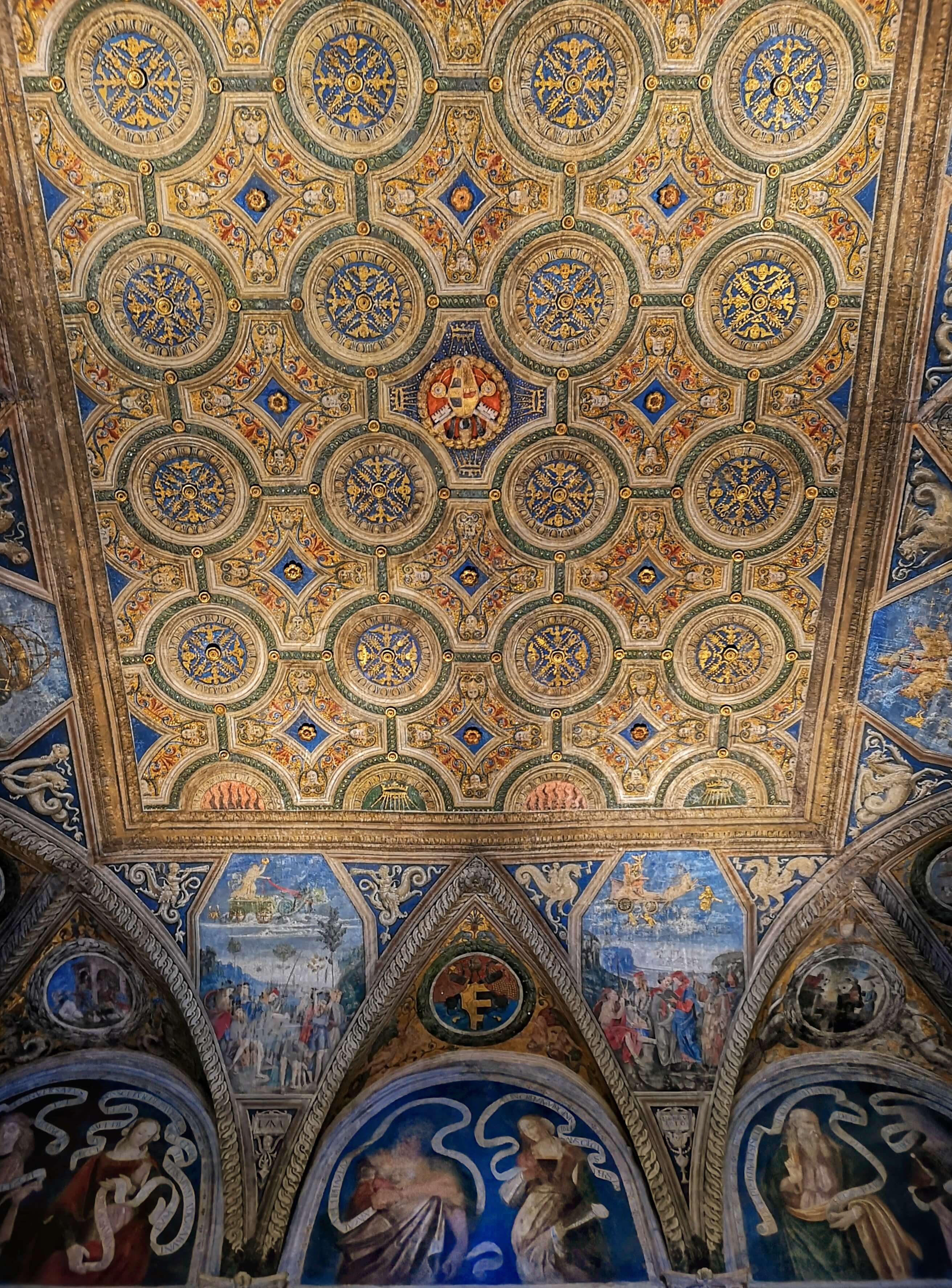
According to medieval Christian theology, the ancient sibyls were female seers who allusively predicted the coming of Christ in their prophecies. Silhouetted against brilliant blue backgrounds, here the sibyls alternate with the prophets of the Old Testament, who in their turn foretold the coming of Christ. You can recognise who’s who by paying attention to the scrolls they are holding, which also reproduce a few lines of the prophecies for which each was famous.
In another example of the desire to link ancient pagan culture with Christian values, above the prophets and sibyls the seven planets are depicted in the guises of Roman divinities being carried triumphantly by chariots - Venus is drawn by a team of bulls, in honour of the Borgia coat of arms. Classically inspired frescoes by Rafaellino del Garbo complete the ensemble.
The Room of the Creed
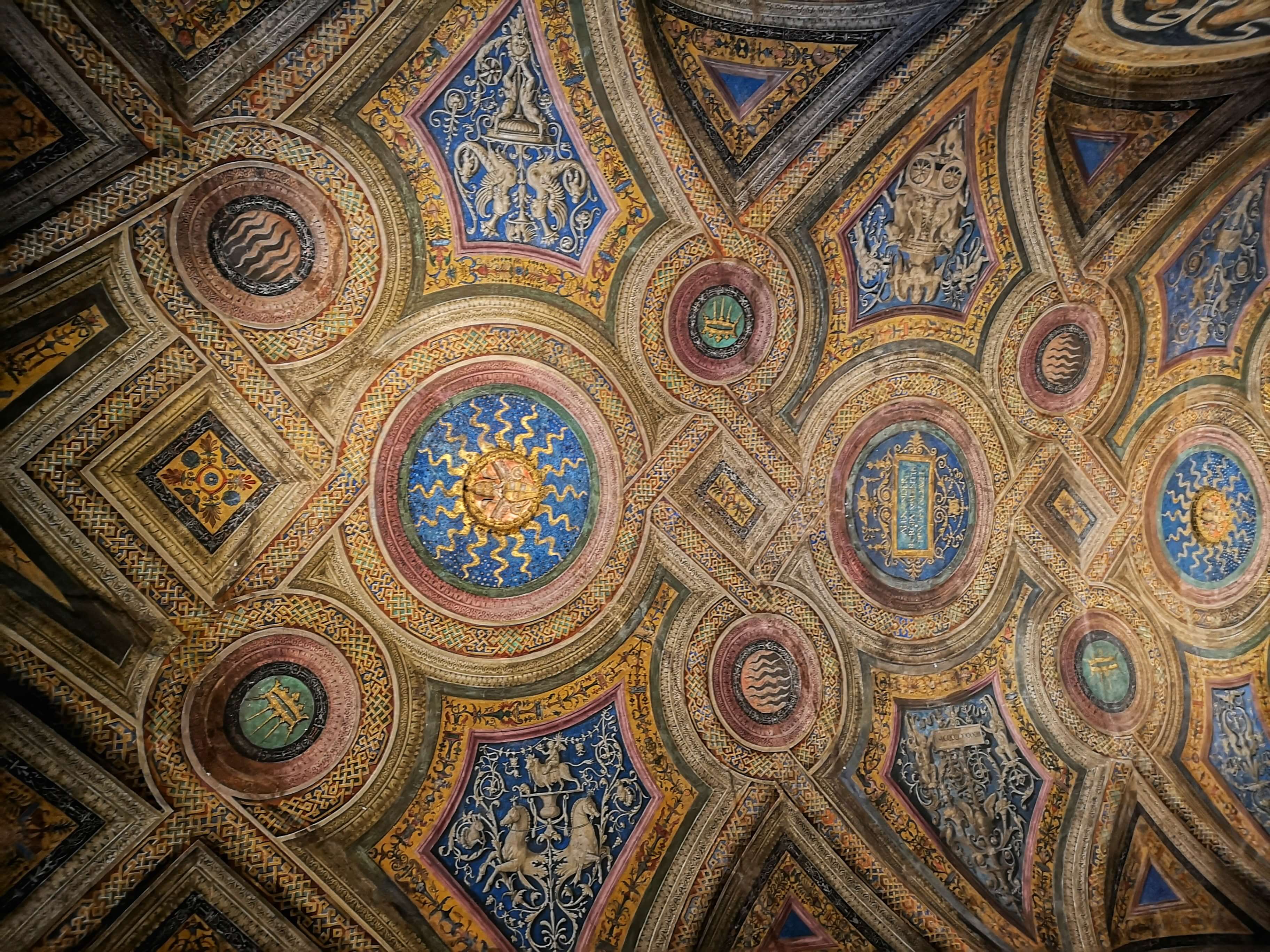
The next room to be decorated in the Borgia apartments was the Room of the Creed, so called because of its dedication to the Apostles’ Creed - the text written by the apostles thanks to divine inspiration in preparation for their departure from Jerusalem to spread to the Gospel to the four corners of the earth. The text of the creed is legible in the scrolls flowing in and around the apostles. In a similar design to the room of the sibyls, the apostles are depicted in alternation with the ancient prophets who according to Christian tradition foreshadowed them
The Room of the Pontiffs

The largest room in the apartments, the Room of the Pontiffs forms part of the medieval portion of the Apostolic Palace built in the late 13th century by Pope Nicholas III. Used for lavish papal banquets during the Borgia reign thanks to its ample dimensions, the original decoration of the room included a series of lunettes frescoed with portraits of the popes by Giotto himself. Unfortunately, the ceiling caved in during a thunderstorm in 1500, destroying the decorations and nearly killing Borgia in the process - to the chagrin of his many enemies, the Pope miraculously survived. The beautiful vault decorations you can see today are from the restoration ordered by Leo X in the 1510s, whose coat of arms stands proudly at the centre, and are the work of Raphael’s students Perin del Vaga and Giovanni da Udine.
We hope you enjoyed our virtual exploration of the stunning Borgia apartments! If you'd like to see Pinturicchio's wonderful Renaissance frescoes for yourself, check out our range of group and private tours of the Vatican Museums and get started planning your next adventure today!
